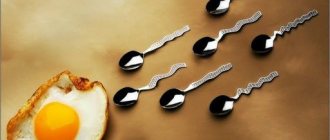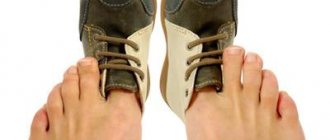Giving birth on a stool: pros and cons
Most recently, I defended my PhD thesis at a medical school on the topic “Optimization of methods, techniques and methods of childbirth”, and now, as a candidate of medical sciences, I would like to briefly share my thoughts.
In my dissertation, an entire section was devoted to vertical childbirth. I would like to call my story “Childbirth: pros and cons.”
As you know, today the classic method of childbirth is childbirth “lying on your back,” although this method became such only recently; until the twentieth century, childbirth was not performed this way anywhere in the world. This is no accident. This method is the most painful for a woman in labor - the baby puts pressure on the spine and lower back, plus there is no help from ordinary gravity.
In my opinion, the only thing worse than this method is birthing upside down - when a woman in labor hangs upside down on a horizontal bar and gives birth (it’s strange why this method is not yet practiced anywhere, it’s very convenient for obstetricians, but the woman in labor doesn’t care). What I mean is that in the “lying on your back” position, it is very convenient for obstetricians to give birth, and our women, not suspecting that there are easier ways of childbirth for them, agree, attributing all the pain to the fact that “this is how it should be” .
But, as you know, all wisdom comes from antiquity. And in the old days, births were never performed in this form anywhere; all births were exclusively vertical. This is probably why in the old days our grandmothers and great-great-grandmothers gave birth to 10 or more children without much pain, in fields and hayfields, quickly and easily. And isn’t that why childbirth is so painful for most women today, many young girls are panicky afraid of even the word “childbirth”.
From the point of view of physics, during vertical childbirth, the mother in labor is greatly helped by gravity - the fetus comes out easier under the influence of gravity. Further, it is easier for a woman in labor to push; anyone in an upright position has better control of their body. As a result, childbirth goes faster, which already gives it an advantage compared to horizontal births.
Let's look at the different types of vertical births. In Rus', as a rule, people gave birth in baths, standing and leaning against the wall. With all the advantages of vertical birth, there is a minus - the birth must be carried out by at least two people - one takes it directly, the second holds the woman in labor, since in a standing position the human body is unstable, and during contractions and pushing, any sudden movement is fraught with serious consequences for the fetus and mother, and is tolerated in a standing position, I think everything is not very comfortable.
Or another way - Chinese - squatting, the same disadvantages, plus it is extremely inconvenient for the obstetrician to deliver the child. Childbirth on all fours lacks the main advantage - the help of gravity, and can be called vertical rather conditionally. It turns out that vertical births also have many disadvantages over horizontal ones.
A year ago, while in Amsterdam for a practice, in one of the maternity hospitals there, I saw a special chair on which they give birth, the woman in labor sits on it, pushes, and the baby comes out into a special hole in the chair. The birth took place quickly and quite easily, there were no ruptures, after five minutes the woman in labor was already holding the baby in her arms.
Having already arrived in Russia, I rummaged through a lot of information and came to the conclusion that childbirth on a chair is a method of childbirth that is devoid of the disadvantages of both horizontal and vertical childbirth. Sitting steadily, the woman in labor can not be afraid that if she makes a sudden movement, she will injure the child while still in her body and her body. The force of gravity helps her push, and in a sitting position, the muscles of the pelvic floor and perineum are in a state that is most convenient for the delivery of the fetus, which in turn reduces gaps and speeds up labor. Contractions are also easier to bear when a woman is sitting, and it is better for her to even walk at this time, but just not lie down. When equipped with this delivery chair, childbirth becomes convenient for the obstetricians themselves.
In conclusion, I can say, dear women, if you have the opportunity to give birth vertically, in particular, on such a chair (some maternity hospitals are already actively introducing this innovation), do not hesitate to agree. In this case, you will get: a faster outcome of childbirth (few people received pleasure from the actual birth), a much reduced chance of perineal ruptures (suturing, then you can’t sit for a week - also unpleasant), and in the end, your childbirth will be much easier, but why? suffer.
But even when introducing such births, obstetricians are in no hurry to offer them, since it is easier for them to deliver on the back. First of all, you should think about yourself and the child, because an easy birth is an easy birth not only for you, but also for your child. So decide for yourself.
Elena Zemtsova, Candidate of Medical Sciences
Childbirth as a life-changing story
free online conference for perinatal specialists and those who only dream of helping women
Participate
Published 2016-12-05T15:06:58Z |
Olga Alekseeva Categories : Childbirth Tags : doula work, ideas for childbirth, dads at birth, fitball, doula services, maternity hospital, free birth, birthing chair
Author: Olga Alekseeva, St. Petersburg
The first stage of labor - the period of dilation - can be quite long. The first light contractions fill a woman’s heart with joy, because they mean that the meeting with the baby, so loved and cherished for nine months, is very soon! The easiest way for most women to move at the very beginning is to walk, dance. This improves the delivery of oxygen to the baby and improves the mother’s mood. But when contractions become more intense, and surviving them requires strength and concentration, it is important to give yourself rest during the breaks. Many women instinctively choose various options for knee-elbow poses at this time. This position of the body contributes to a more effective, but soft opening. It is convenient to “breathe out” the fight and rest between them. Your assistant can take additional care of convenience and comfort by suggesting the use of pre-prepared pillows, blankets, and fitballs. Knee-elbow positions can be replaced by squatting poses and their variations, for example, sitting on the toilet or a special maternity chair. This position helps the head to insert correctly and the baby to pass through the birth canal. This is facilitated by a certain pelvic tilt angle achieved when squatting. This position is most effective in cases where the cervix is fully dilated and the baby’s head has not yet descended to the pelvic floor. The squatting position is quite unstable, so a birthing chair and the strong hands of an assistant will be especially helpful. It happens that doctors insist on a woman lying down, usually when drip administration of medications and some types of fetal monitoring are necessary. In this case, many women find it convenient to use a peanut ball by throwing one leg over it. Most women take one position or another completely involuntarily, as the body requires for the most effective work, but knowing the possible options in advance, you can prepare yourself several cozy and comfortable nests for different poses. If the birth is planned in a certain maternity hospital, you can always ask in advance what is available in the delivery room to make contractions more comfortable, and whether you can take any equipment with you. You can also find out what your doula can bring for birth - some doulas have their own exercise balls, peanut balls, birthing chairs and even birthing pools.
How does labor begin?
There are two options: either contractions begin first, or amniotic fluid breaks.
If the water begins to break, then even in the absence of contractions, the woman needs to go to the maternity hospital. The breaking of water means that the amniotic sac is damaged and no longer protects the baby from infection. A long period without water (more than 12 hours) threatens the child’s health also because a pressure difference is created and the presenting part (usually the head) experiences an increased flow of blood, which can subsequently lead to problems with the nervous system.
A clear or whitish color of amniotic fluid is considered normal. Yellow water occurs occasionally in cases of Rh conflict between mother and fetus. The green color of the water indicates that meconium (original feces) has entered it, which may be a sign of post-term pregnancy or oxygen starvation of the fetus. If the waters are pinkish, then the woman should be immediately taken to the hospital. This color is given to the water by the blood that got there as a result of the beginning of the separation of the placenta. This means that the child is not receiving enough oxygen, and emergency measures must be taken to save him.
Another, calmer scenario for the onset of labor is the appearance of contractions before the water breaks. If the amniotic sac is intact, the woman in labor can remain at home throughout the first phase of labor, provided that she feels confident and ready to go to the hospital at any time.
Harbingers of childbirth
Let's start with the signs of impending labor. These are the so-called “harbingers”.
Two weeks before giving birth (maybe later, but not earlier), the expectant mother’s stomach drops. The baby's head moves lower, and it becomes easier for the woman to breathe because the baby is no longer supporting the diaphragm and lungs. Sometimes descent occurs already at the beginning of labor, after the first contractions appear. This is also considered the norm.
A couple of days before giving birth, a pregnant woman may notice a discharge in the form of thick mucus, possibly streaked with coagulated blood. Sometimes it looks like water pouring out abundantly. This means that the mucus plug covering the cervix is coming off. However, in some cases, the plug also comes off during childbirth.
As the cherished deadline approaches, Braxton-Hicks spasms become more and more frequent and noticeable. These are “training” contractions that prepare the uterus for the job of pushing the baby out. They are felt as periodic irregular tensions in the abdomen: the uterus seems to “turn to stone” for a few seconds, and then relaxes again. Unlike real contractions, Braxton Hicks spasms are painless because they do not cause the cervix to dilate.
The “nesting instinct” is often called a precursor. This term is not entirely clear, so it is often misinterpreted. The desire to arrange a “nest”, prepare things and a crib for the baby, and update your home comes much earlier, approximately in the middle of pregnancy, and has nothing to do with the “nesting instinct”. A sign of imminent delivery is considered to be a woman’s desire to hide from prying eyes, to hide in a cozy corner of the sofa or chair, where she feels as comfortable as possible. By analogy with the animal world, where the female is looking for a quiet and safe place to give birth to her offspring.
Another fairly clear harbinger may be a decrease in the pregnant woman’s weight by about a kilogram. This usually occurs in the last week of pregnancy.
As we see, all the harbingers can only indirectly indicate the approach of childbirth. No one can say exactly when they will begin.
It is this uncertainty that often frightens a woman. She is afraid that she will not be able to reach her husband, will not have time to get to the maternity hospital, will be confused, and will not know what to do. If you are one of those who constantly need “safety net” in the form of the presence of medical staff, you may be more comfortable going to the maternity hospital in advance. If the sight of hospital walls makes you despondent, you are an active person and at the same time you have no medical indications for early hospitalization, stay at home as long as you feel comfortable.
How does the squatting position affect your health?
In his book “Muscles and Meridians. Manipulation of Shape" (Muscles and Meridians: The Manipulation of Shape), New Zealand osteopath Philip Beach formulated the theory of archetypal poses. Its essence is that there are primary provisions that our ancestors accepted two and a half million years ago. And they are not just useful. Our body itself is designed so that a person can remain in a certain position for a long time without harm to the body. Including - squatting, Turkish or Japanese (on your knees with support on your heels).
There is no scientific research to support the theory of archetypal poses. But medicine does not deny their benefits.
It all comes down to the simple principle of “use it or lose it.” Each of our joints contains synovial fluid. It is like a lubricant that nourishes the cartilage. For fluid to be produced, two things are needed: movement and compression. If a joint doesn't move through its full range of motion, such as the hips and knees never flexing more than 90 degrees, the body thinks it's not being used—and stops producing synovial fluid.
physiotherapist Bahram Jam
In other words, if you want to maintain joint mobility and flexibility for as long as possible, bend your knees more often. For example, squat down. Research also confirms the positive effect of this position on intestinal motility Implementation of a Defecation Posture Modification Device.
A healthy musculoskeletal system not only makes us flexible and agile, it affects our life expectancy.
Doctors from Brazil and the United States have concluded that flexibility, muscle strength and balance are important for a long, healthy life. They asked study participants to sit on the floor and then rise in a comfortable manner. Observations of ability to sit and rise from the floor as a predictor of all‑cause mortality in patients aged 51 to 80 years showed that those who stand up easily have a life expectancy three years longer than those who do not. who cannot rise without support.











